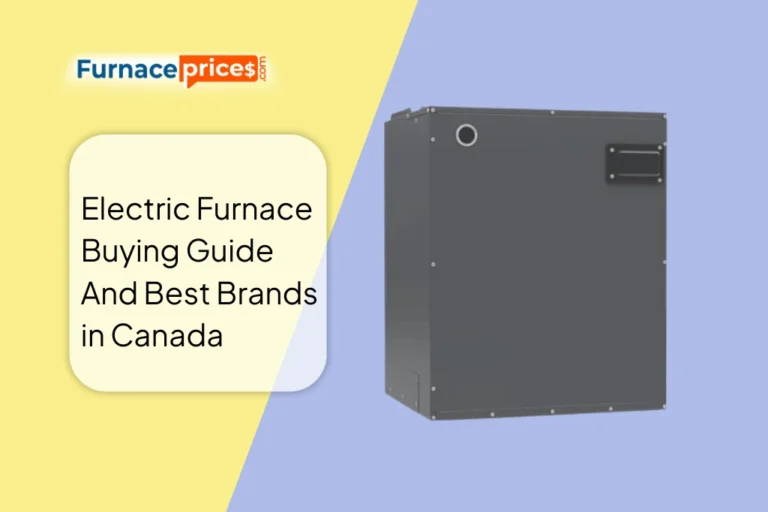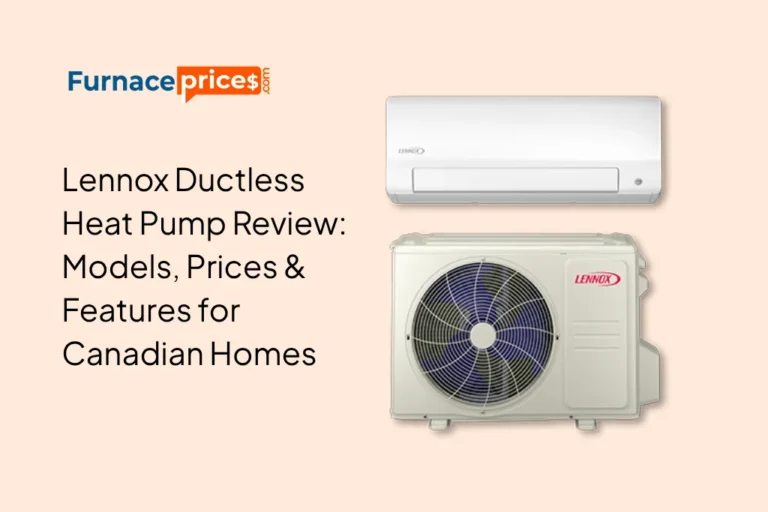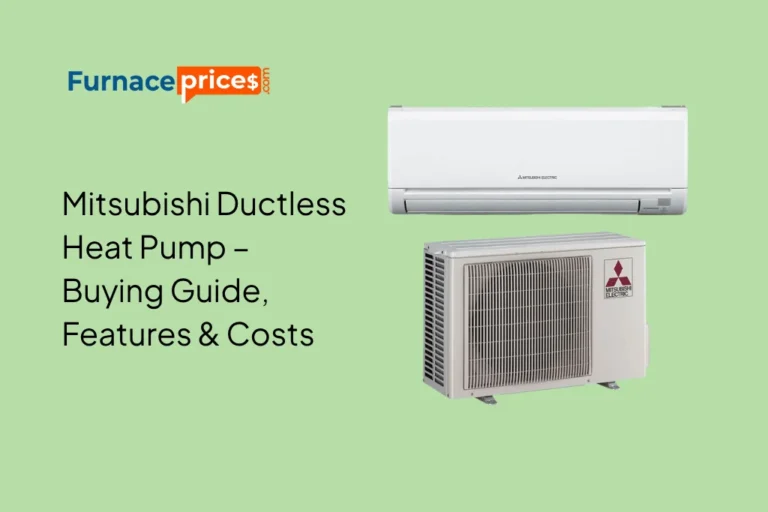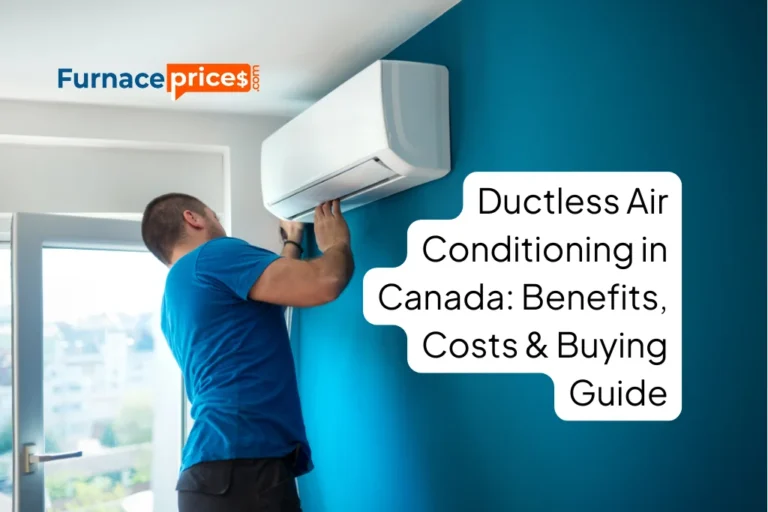Energy Efficiency Ratings for HVAC Equipment: Everything Canadian Homeowners Should Know

Heating and cooling systems account for more than half of the typical Canadian household’s annual energy use, according to data from Natural Resources Canada (NRCan) and the U.S. Energy Information Administration (EIA). With energy costs continually rising, understanding the Energy Efficiency Rating for HVAC systems has never been more important.
Just as a fuel-efficient car saves money at the pump, a high-efficiency furnace, heat pump, or air conditioner can significantly reduce your monthly energy bills. The goal of this guide is to help homeowners in Ontario — and across Canada — understand key HVAC efficiency metrics so they can make informed decisions when replacing or upgrading their systems.
By learning how these ratings work, you can choose equipment that delivers reliable comfort year-round while lowering long-term energy expenses. Whether you’re upgrading an old furnace, installing a new heat pump, or comparing air conditioners, understanding efficiency standards helps ensure your investment provides maximum performance and value in every season.
What Are Energy Efficiency Rating?
Energy efficiency ratings are standardized measurements that compare how effectively HVAC systems convert energy (fuel or electricity) into heating or cooling output. These metrics make it easier for homeowners to compare performance and estimated energy costs between different equipment models and manufacturers.
The most common efficiency ratings used in Canada include:
- HSPF (Heating Seasonal Performance Factor) – For air-source heat pumps
- SEER (Seasonal Energy Efficiency Ratio) – For air conditioners and cooling performance of heat pumps
- AFUE (Annual Fuel Utilization Efficiency) – For furnaces and boilers
- COP (Coefficient of Performance) – For electrically powered HVAC systems, especially geothermal heat pumps
Understanding the Energy Efficiency Rating for HVAC systems can help you choose options that balance cost, comfort, and long-term savings. By reviewing these benchmarks before purchasing, you can easily identify which products meet modern energy standards, qualify for rebates, and perform efficiently under Canada’s varying climate conditions—ensuring consistent comfort and reduced energy bills throughout the year.
Heat Pump Efficiency Rating: Understanding the HSPF
The Heating Seasonal Performance Factor (HSPF) measures the efficiency of air-source heat pumps during the heating season. It shows how much heat a unit delivers for every kilowatt-hour (kWh) of electricity consumed.
In simple terms, the higher the HSPF, the more efficiently your heat pump turns electricity into usable heat.
Formula:
HSPF = (Total Heating Output during Season (BTU) / 1,000) ÷ Electricity Used (kWh)
Let’s look at an example:
A typical home in Ontario might need around 60 million BTU of heating per year.
| Annual Heating Need | Heat Pump Efficiency (HSPF) | Electricity Use (kWh) | Estimated Cost (at $0.20/kWh) |
| 60,000,000 BTU | 8 | 7,500 kWh | $1,500 |
| 60,000,000 BTU | 10 | 6,000 kWh | $1,200 |
| 60,000,000 BTU | 12 | 5,000 kWh | $1,000 |
A heat pump rated HSPF 10 uses roughly 20% less electricity than one rated HSPF 8, while an HSPF 12 model offers about 33% savings. Over time, these differences add up — especially as electricity rates in Canada increase by roughly 3–5% per year.
Tip: When shopping for a new heat pump, look for models with higher HSPF2 ratings (explained later). These are tested under updated, more realistic conditions introduced in 2023.
Air Conditioner Efficiency Rating: Understanding the SEER
The Seasonal Energy Efficiency Ratio (SEER) measures cooling performance for air conditioners and heat pumps in cooling mode. Like HSPF, it indicates how efficiently a system uses electricity, but for cooling output instead of heating.
Formula:
SEER = (Total Cooling Output (BTU) / 1,000) ÷ Electricity Used (kWh)
A higher SEER rating means better efficiency and lower cooling costs.
Here’s an example for a home with 20 million BTU of cooling demand per year:
| Annual Cooling Need | AC Efficiency (SEER) | Electricity Use (kWh) | Estimated Cost (at $0.20/kWh) |
| 20,000,000 BTU | 15 | 1,333 kWh | $267 |
| 20,000,000 BTU | 20 | 1,000 kWh | $200 |
| 20,000,000 BTU | 25 | 800 kWh | $160 |
A 20 SEER air conditioner can save about 25% on cooling costs compared to a 15 SEER model, while 25 SEER units save about 40%.
Although Canada’s cooling season is shorter than the heating season, high-efficiency systems can still lead to meaningful summer savings — especially in regions like southern Ontario where heat waves are becoming more frequent.
SEER vs. EER:
You may also encounter EER (Energy Efficiency Ratio) ratings. While SEER averages performance across varying temperatures, EER measures cooling efficiency at a single high temperature (35°C / 95°F). SEER therefore provides a more practical reflection of seasonal performance.
Furnace and Boiler Efficiency: Understanding the AFUE
For furnaces and boilers that burn fuel (such as natural gas or propane), efficiency is measured using the Annual Fuel Utilization Efficiency (AFUE) rating.
AFUE represents the percentage of fuel energy converted into usable heat. The higher the AFUE, the less energy is wasted through exhaust or other losses.
Formula:
AFUE (%) = (Useful Heating Output ÷ Fuel Energy Input) × 100
Older furnaces — common in many older Ontario homes — often operate at 60% AFUE or less, meaning nearly 40% of the fuel is wasted. Modern furnaces are far more efficient:
- Standard efficiency: ~80% AFUE
- High efficiency: 90–98% AFUE
Here’s how fuel consumption and cost compare for a home requiring 60 million BTU of heating annually, assuming natural gas costs about $15 per MMBTU:
| Annual Heating Need | Furnace Efficiency (AFUE) | Gas Use (MMBTU) | Estimated Cost ($15/MMBTU) |
| 60,000,000 BTU | 60% | 100 | $1,500 |
| 60,000,000 BTU | 80% | 75 | $1,125 |
| 60,000,000 BTU | 90% | 66.7 | $1,000 |
| 60,000,000 BTU | 98% | 61.2 | $918 |
High-efficiency furnaces not only reduce operating costs but also cut emissions — an important benefit as Canada continues to prioritize cleaner home heating options.
COP: A General Efficiency Measure for HVAC Systems
The Coefficient of Performance (COP) is a versatile efficiency metric used for any electrically powered HVAC system — from air conditioners to geothermal heat pumps.
Formula:
COP = Useful Heating or Cooling Output ÷ Energy Input
A higher COP means the system delivers more heating or cooling per unit of electricity used.
Typical COP ranges:
- Air-source heat pumps: 2 to 4 COP
- Ground-source (geothermal) heat pumps: Up to 6 COP
Because geothermal systems draw heat from the ground — where temperatures remain relatively stable — they maintain higher efficiency year-round. However, installation costs are significantly higher.
According to major manufacturers, air-source heat pumps generally range from $3,000–$15,000, while geothermal systems can cost $12,000–$45,000 depending on home size, soil conditions, and system configuration.
While upfront costs may be high, geothermal systems often pay off over time through reduced energy use and increased longevity.
The 2023 Update: HSPF2 and SEER2 Standards
In 2023, both Natural Resources Canada (NRCan) and the U.S. Department of Energy (DOE) implemented new, more rigorous testing standards for HVAC equipment — known as AHRI 210/240-2023. These updates were designed to ensure energy efficiency rating better reflect how systems perform in real-world Canadian climates rather than in controlled lab settings.
As a result, manufacturers now label systems using updated metrics called HSPF2 and SEER2, which replace the older HSPF and SEER labels. The new tests simulate realistic conditions, accounting for static pressure in ductwork, outdoor temperature swings, humidity, and system load changes throughout the season.
Since the new tests are stricter, HSPF2 and SEER2 values are generally lower than the old ones, even though the actual system performance hasn’t changed. The efficiency scale has simply been recalibrated for accuracy and fairness.
For homeowners, this means:
- A system rated 15 SEER2 roughly equals a 16–17 SEER under the old rating.
- Always confirm whether you’re comparing SEER2/HSPF2 or older SEER/HSPF ratings when reviewing quotes or product brochures.
- Understanding these differences helps you make a fair comparison when upgrading or replacing HVAC equipment.
Maximizing HVAC Efficiency Beyond Ratings
While Energy Efficiency Rating for HVAC systems is a great starting point, it doesn’t tell the full story. Even the most advanced, high-efficiency HVAC system can underperform if not installed or maintained properly. External factors like insulation quality, air leakage, and thermostat use play a big role in overall performance and energy savings.
Here’s how to ensure you’re getting the most out of your equipment:
- Professional Installation
Proper sizing and setup are critical. A system that’s too small won’t meet your heating needs efficiently, while an oversized unit will cycle too frequently, leading to wasted energy and wear. Always hire certified HVAC professionals who understand local climate conditions and building codes. - Regular Maintenance
Schedule annual tune-ups with a licensed technician. Tasks like filter replacement, duct inspection, and refrigerant level checks help maintain optimal performance and protect your warranty. Preventive maintenance also reduces the risk of breakdowns and extends the lifespan of your equipment. - Home Insulation & Sealing
Improving attic insulation, sealing leaks, and upgrading windows can further reduce energy loss — allowing your HVAC system to work less and save more. Even small gaps around doors and vents can add up to significant energy waste over time. - Smart Thermostat Integration
Pairing your HVAC system with a smart thermostat can fine-tune temperature settings, reducing unnecessary heating or cooling when no one is home. Modern thermostats also learn your habits, helping maintain consistent comfort while optimizing efficiency automatically.
Why Efficiency Matters in Ontario and Across Canada
Canadian homeowners face unique climate challenges — long, cold winters and increasingly hot summers. In Ontario especially, heating represents a major portion of total household energy use. Investing in energy-efficient HVAC systems not only helps manage these temperature extremes but also supports long-term sustainability and comfort.
By choosing energy-efficient HVAC systems, homeowners can:
- Lower annual utility costs
- Reduce environmental impact
- Increase property value
- Qualify for rebates from programs like Enbridge Gas Home Efficiency Rebate Plus (HER+) and NRCan’s Greener Homes Initiative
These programs often provide significant financial incentives for installing high-efficiency furnaces, heat pumps, and insulation upgrades. Additionally, improving efficiency reduces strain on the power grid during peak demand periods, ensuring more stable energy supply and contributing to Canada’s nationwide emissions reduction goals.
Final Thoughts: Making Informed HVAC Choices
Upgrading to a high-efficiency furnace, air conditioner, or heat pump is one of the most reliable ways to reduce energy costs and carbon emissions in your home.
Efficiency ratings — HSPF2, SEER2, AFUE, and COP — provide valuable insight into a system’s performance. But remember, true savings come from a combination of efficient equipment, expert installation, and consistent maintenance.
By understanding these metrics, Canadian homeowners can confidently choose HVAC systems that balance comfort, cost, and sustainability for years to come.
Need Expert Help Choosing the Right HVAC System?
Our guides at FurnacePrices.com are backed by real industry experience — not paid placements.
Visit us today to compare models, learn about available rebates, or connect with certified local HVAC contractors you can trust.
For more information on energy efficiency standards and incentives in Canada, visit Natural Resources Canada.
📞 Have questions? Contact us or email us at contact@furnaceprices.com.
✅ Start comparing today and make the right choice with confidence!







